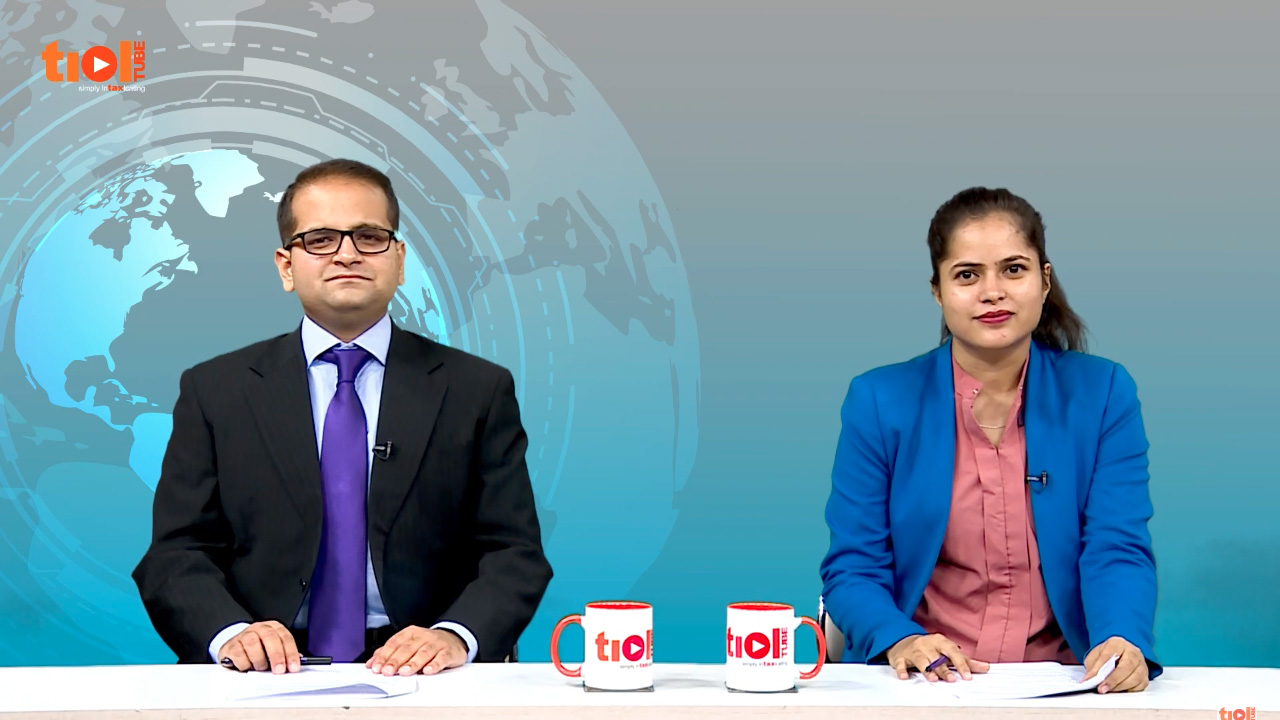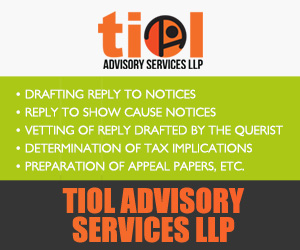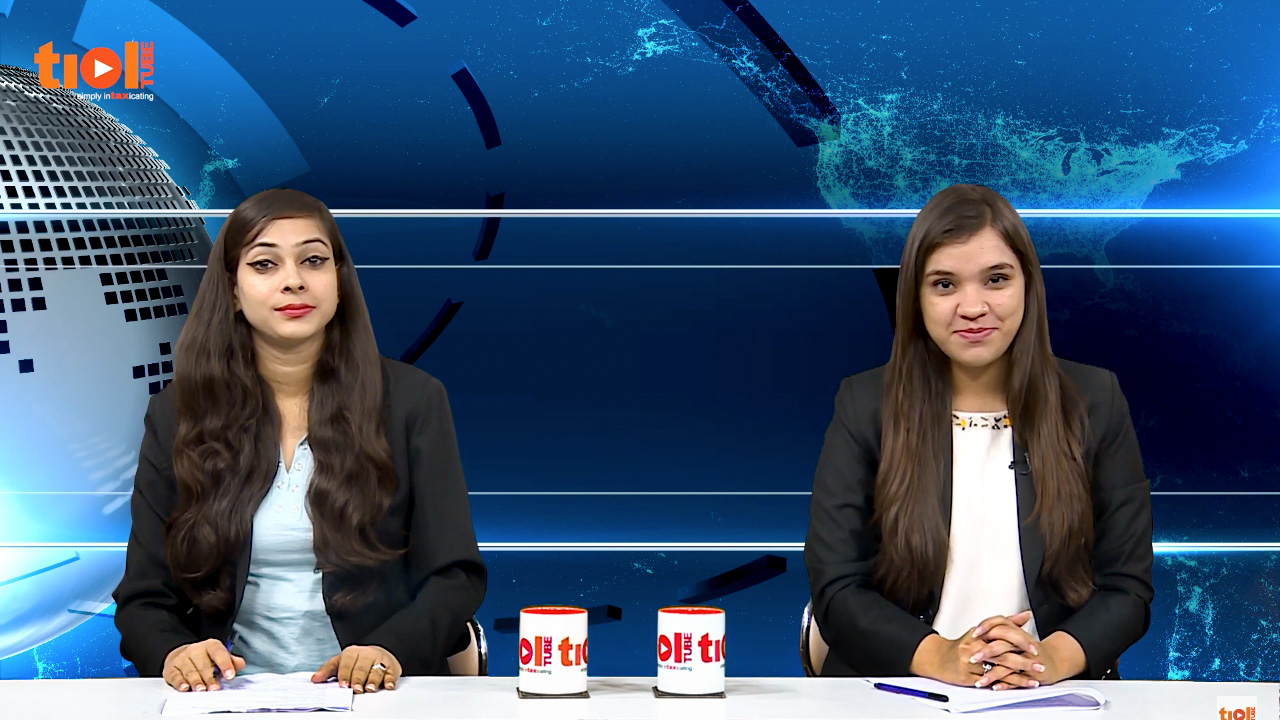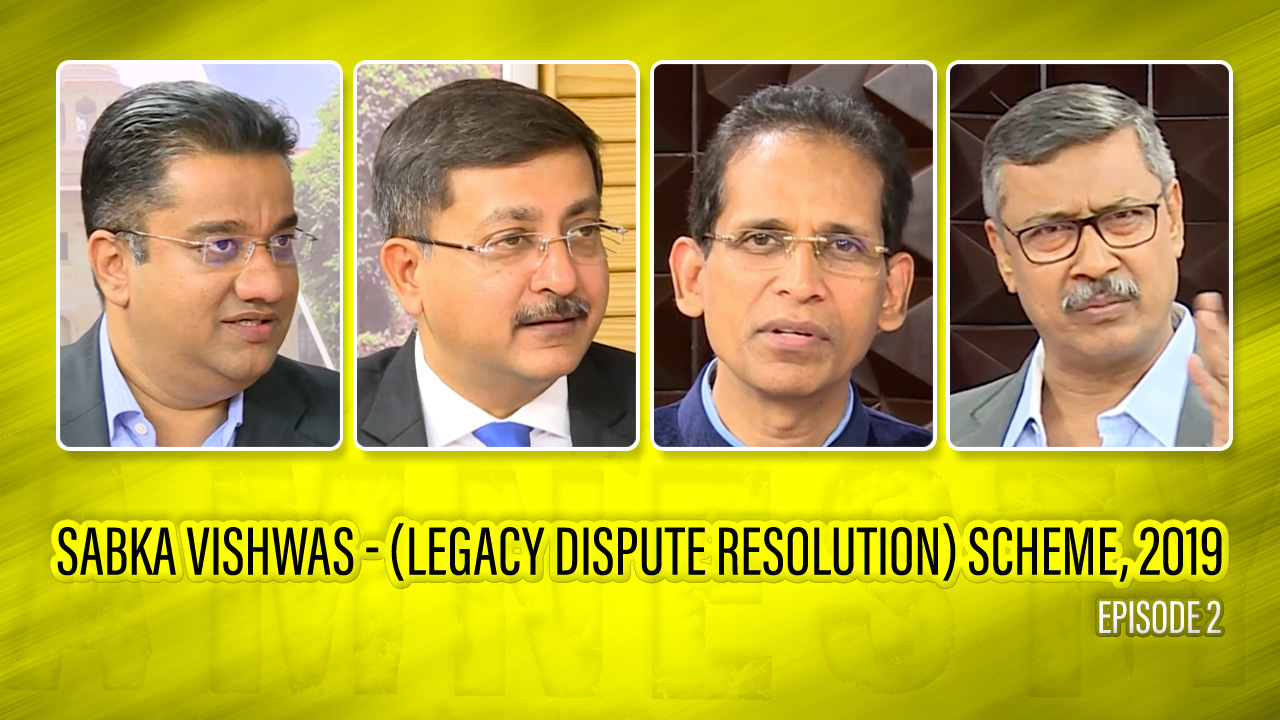|
SERVICE TAX
2019-TIOL-3339-CESTAT-ALL
HCL Infosystems Ltd Vs CCE
ST - The assessee is engaged in manufacture of various products as also providing various taxable services - They were also indulging in trading activity which stands considered by revenue as exempted services - As the assessee was availing input service tax credit in respect of various input services, which were either being used exclusively for providing taxable services or were being commonly used for providing both the types of services, Revenue entertained a view that they are required to pay 10% of value of exempted services - Accordingly, proceedings were initiated against them by way of issuance of SCN - The said proceedings were contested by assessee on merits as also on limitation - As regards merits of the case, assessee contended that all the credit availed in respect of disputed seven services which were used commonly for taxable as also exempted services, stands reversed by them to the extent of around Rs.5.30 Crores approximately - Having gone through the allegations in SCN, primarily the allegation against the assessee was in respect of seven services detailed in preceding paragraphs and the assessee's plea before the adjudicating authority also revolved around the said seven services only - As such, the dispute should revolve only around the disputed seven services which were subject matter of SCN - However, the fact that the entire credit availed in respect of said seven services stands reversed by assessee, is required to be verified by lower authority, for which purpose, the impugned order is set aside and the matter is remanded to Original Adjudicating Authority for doing the needful - As the matter for verification of said factual position, the issue of limitation is also kept open for Original Adjudicating Authority to re-decide during the remand proceedings: CESTAT
- Matter remanded: ALLAHABAD CESTAT
2019-TIOL-3338-CESTAT-CHD
Bharati Infratel Ltd Vs CST
ST - The short issue involved is, whether the assessee is entitled to avail credit on tower, shelter in terms of Rule 2(k) of CCR, 2004 and whether the assessee is entitled to avail credit on input service used for providing telecommunication services/passive infrastructure in terms of Rule 2 (l) of CCR, 2004 - The issue has been settled by Tribunal in their own case vide Final Order dt.21.2.2019 wherein it is held that the assessee is entitled to avail cenvat credit on items, towers, shelter parts thereof being inputs used for providing output service - Therefore, relying on the said decision of Tribunal in assessee's own case, the impugned order is set aside: CESTAT
- Appeals allowed: CHANDIGARH CESTAT
CENTRAL EXCISE
2019-TIOL-3337-CESTAT-DEL
Hindustan Zinc Ltd Vs CCE & ST
CX - Whether the cement used by the appellant who were asked to extract ore from the proposed ore block but only after conducting stopping operations of the said ore blocks, can be called as input.
Held: Perusal of record shows that there has been a permission under the Metalliferous Mines Regulations Act, 1961 [Regulations] in favour of the appellant vide which the appellant was permitted to conduct stopping operations of the ore block by making use of impugned cement and the method of extraction shall be by VRM Stopping method post filled by mill failing mixed with cement in the ratio as prescribed therein - the permission specifically recites that extraction of ore from the proposed area shall be commenced only after proper settlement and consolidation of the fill of stopped out ore block, immediately below the proposed ore block - perusal of these clauses in the permission by the mines department in favour of the appellant makes it abundantly clear that filling of the open ore pits with cement was a mandatory pre-requisite for the appellant to extract ore - it was a statutory requirement as well in view of the Regulation 107 (3) - further, it has been the settled law that: "all goods used in the factory of the manufacturer of final product, other than the goods itemized in the excluded category mentioned therein, are eligible for consideration as input for the purpose of taking Cenvat credit - thus, an assessee only needs to prove that the goods were received in the factory and that the same are not covered by any of the exclusions, since the definition of input is very wide intending to take within its ambit all goods used in the factory of the manufacturer of final product - undisputedly, in the present case, cement has been used within the mining area, thus qualifies for cenvat credit - in support of this, reliance is placed upon the decision of the Tribunal in the case of Prism Cement Ltd. - 2016-TIOL-1749-CESTAT-DEL - thus, it is opined that the cement used herein is a goods which has relation, though indirectly, with the extraction of ore and qualifies for input under rule 2(k) of the Cenvat Credit Rules, 2004, prevailing during the relevant period - following the earlier decisions in the cases of JK Cotton Spinning and Weaving Mills Co. Ltd. - 2002-TIOL-116-SC-CT-LB and Tribunal's Final Order 56900/2017 dated 28.9.2017, and keeping in view the above discussion, without filling of the ore pits the appellant was statutorily, not in position to extract the ore, i.e. the final product, thus the use of cement was very much in relation to the manufacture which was extraction of ore in the impugned cases - therefore, the appellant is entitled to treat the same as input - the clarification to this effect is available in Circular No.943/04/2011-CX dated 29.4.2011 - resultantly, it is held that the adjudicating authority below has committed an error while denying the credit on cement used by appellant in filling pits for making area fit for ore extraction - as a result of entire above discussion, both the impugned orders under challenge are set aside - resultantly, both the appeals stand allowed : CESTAT [para 8, 9, 12, 13, 14]
- Appeals allowed: DELHI CESTAT
2019-TIOL-3336-CESTAT-DEL
Hindustan Zinc Ltd Vs CCGST
CX- SCN dated 30.5.2013 was served upon the appellant wherein it is alleged that the appellant has wrongly availed cenvat credit of ST amounting to Rs.23.63 lakhs during the period from March, 2010 to January, 2011 on the strength of improper documents relating to Erection, Commissioning and Installation Services as the invoices issued by M/s. Apex Encon Projects Ltd. do not bear the name of the appellant - cenvat credit disallowed, ordered for recovery thereof along with interest, equivalent penalty imposed - on appeal, the Commissioner (Appeals) rejected the same, hence appeal before CESTAT.
Held: Admittedly, the invoices were issued by the service provider to the service recipient and the same were submitted to the competent authorities while availing the credit of the taxable amount as paid by the recipient - all particulars as required under rule 9(2) of the Cenvat Credit Rules, 2004 are mentioned in the said invoice - contention of department is that the name of service recipient is not mentioned therein - there is no denial to the fact that the service recipient is Rampura Agucha Mines of M/s Hindustan Zinc Ltd., the Appellant, the short form thereof cannot be ruled out to be RAM which is, specifically, mentioned in the said invoices - department has not come up with any documentary or otherwise evidence to substitute said RAM mentioned in the invoice to someone else than the service recipient - in addition, the Bench has perused the letters as have been impressed upon by the appellant to be the integral part of the impugned invoices - it is perused from the grounds of appeal as was filed before Commissioner (Appeals) that these letters were placed on record before him as well - the perusal of these letters makes it clear that the letters are with respect to a particular bill, quantifying the amount as is the subject matter of the said respective bill - it is also observed that the letters also bear not only the name of the appellant but also the name of the service recipient i.e. Rampura Agucha Mines - not only this, the appellant has also produced on record the copies of the supplementary invoices where RAM is clarifying to mean as R.A. Mines of Hindustan Zinc Ltd. - hence, the findings that these are not the integral part of the invoice are not sustainable and are liable to be set aside - it is also observed that the Commissioner (Appeals) has mentioned that these letters otherwise cannot be considered for want of rectified invoices to have not been put forth before him - but as already observed above, from the copies of grounds of appeal as was filed by the appellant before him that even rectified invoices were placed before him - for this reason also, the Order since has not properly appreciated the facts has rather wrongly appreciated the same, is liable to be set aside - the CBEC Circular No.441/7/99 dated 23.2.1999 clarifies that Cenvat credit cannot be denied based solely on the procedural grounds - now coming to the aspect of the SCN being barred by limitation, the department had conducted an audit of the appellant from 15.2.2011 to 19.2.2011 that too for the period March, 2010 to January, 2011 that is for the same period as is mentioned in the present SCN - accordingly, it stands clear that the entire issue was in the notice of the department since February, 2011 - the notice of 30.5.2013 is definitely beyond one year of the said date of knowledge, hence is definitely barred by limitation - also in view of letter dated 22.11.2011, there seems no reason to allege suppression on part of the appellant - the department was not entitled to invoke the extended period of limitation - above all, it is a settled principle that a substantive benefit cannot be denied on procedural grounds - in the present case, it is not even the case of procedural lapse but the case of wrongly interpreting the abbreviations - the order under challenge is, accordingly, set aside, appeal stands allowed : CESTAT [para 5, 6, 7, 9, 10]
- Appeal allowed: DELHI CESTAT
CUSTOMS
2019-TIOL-3340-CESTAT-MUM
Neeraj Sharma Vs CC
Cus - The issue involved in these matters is whether the appellants had been placed on notice of proposals along with reasons thereon to re-classify the imported goods.
Held: On perusal of notice, it is seen that the proposal is limited to rejection of value of USD 2950 per MT declared in the Bills of Entry to enable the re-assessment u/s 14(2) of the Customs Act to be substituted by tariff value of USD 4524 per MT on imported Brass Scrap and for confiscation of the goods, besides resorting to penal provisions - It appears that conclusion of nature of goods & not as want of includability in the claimed classification but an entirely different description has been presumed to require compliance with Section 18 of Customs Act - The provisions pertaining to assessment based on a statutory determined tariff value is a special law carved out of the general law applicable to ad valorem duties specified in the First Schedule to the Customs Tariff Act 1975 - The rate is to be determined by the proper officer u/s 12 of the Act - The charging section is the fount of constitutionally sanctioned levy of Customs duty - The application of ad valorem or specific rate flows from this authority and it is only on the applicability of the former that the provisions for valuation can be resorted to - It is well settled law that Section 14 of the Customs Act is a measure of value, permitted by legislative sanction, for computation of duty - It was not intended to supplant the basic determination of duty leviability - The starting point of any assessment is the acceptance of declared classification or its substitution with an alternative classification u/s 17, 18 or 28 of the Customs Act - No notification issued by the Govt or by any authority can suffice as basis for levy of duty - Presumption of conformity to description in such notification does not suffice to overcome the onus of proposing an alternative classification or different rate of duty - The conclusions derived from the test reports are not unambiguous - Mere conclusion of non-conformity to declared declaration did not sanction the adoption of an alternative classification which has not even been proposed - Such non-conformity even if acceptable does not empower the invoking of tariff value without undergoing the test of conformity with the description to which such tariff value should be applied - The lack of proposal to subject the goods to an alternative classification and leap over the unabridged chasm of applicability to the notification for assessment of tariff value renders the O-i-O to be unsustainable: CESTAT
- Appeals allowed: MUMBAI CESTAT
| |







